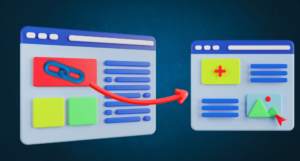What is RAG in the Context of SEO?
RAG (Retrieval-Augmented Generation) is an advanced AI framework that enhances content generation by combining information retrieval with language generation. In SEO terms, this means creating highly relevant, fact-checked, and dynamic content that aligns with search intent while referencing real-time or external data sources.
Instead of relying only on static training data, RAG systems retrieve updated information (from search engines, knowledge bases, or internal documents) before generating content. This leads to more accurate, authoritative, and trustworthy outputs a major benefit in today’s evolving SEO landscape.
Why is RAG Important for SEO in 2025?
SEO in 2025 is no longer about keyword stuffing or outdated ranking tricks. Search engines are now smarter, powered by AI-driven ranking algorithms that focus on user intent, content quality, topical authority, and information accuracy.
Here’s why RAG matters in 2025:
- Fulfills Search Intent Better
RAG-generated content is grounded in relevant, real-world data leading to answers that match exactly what users are searching for. - Reduces AI Hallucination in Content
Standard AI tools may generate false or outdated facts. RAG fixes this by retrieving real, up-to-date information before writing. - Builds Topical Authority
With access to trusted sources, RAG helps SEO professionals create deep, authoritative content across niche topics. - Improves E-E-A-T (Experience, Expertise, Authoritativeness, Trustworthiness)
Google’s emphasis on E-E-A-T in 2025 rewards content that shows expertise and is backed by data RAG supports this naturally. - Supports AI-First Search Experiences
As tools like Google’s AI Overviews and Bing Chat become central to SERPs, RAG helps marketers adapt content for these conversational interfaces.
How RAG Works in SEO Workflows?
- User Intent Detection
Tools analyze what users truly want when they search (e.g., “best SEO tools 2025”). - Information Retrieval
RAG retrieves the most relevant articles, blog posts, case studies, and sources including your own site content, Google results, or niche databases. - Context-Aware Content Generation
Based on the retrieved data, it creates long-form or short-form content optimized for SEO, with natural keyword usage and structured formatting. - Citations and Linking
RAG can include source citations or internal links, improving both user trust and on-site SEO. - Continuous Updates
Since RAG can fetch new data, it helps refresh and update content automatically, keeping pages relevant and ranking.
Real-World Uses of RAG in SEO (2025)
Content Agencies: Use RAG to generate niche blogs backed by trusted sources.
Ecommerce Sites: Create product descriptions and FAQs that pull from reviews, manuals, and competitors.
SEO Consultants: Generate up-to-date SEO reports and competitive analysis with real-time data.
Enterprise SEO Teams: Feed RAG their internal knowledge base to power scalable content marketing.
The Future of RAG in Search Engine Optimization
Optimizing for AI Search (Google’s AI Overviews, Perplexity, Bing AI)
Dynamic Page Updates based on algorithm changes or data shifts
Semantic SEO: Building content around meaning, not just keywords
Predictive SEO: Using real-time trends and RAG to forecast ranking content
RAG (Retrieval-Augmented Generation) isn’t just a technical buzzword it’s a game-changer for SEO in 2025. It helps marketers and businesses create smarter, more accurate, and intent-focused content that search engines (and users) love.
Whether you’re aiming to rank on Google, optimize for AI-first interfaces, or dominate your niche with authority content . RAG is your secret weapon in the new era of SEO.







